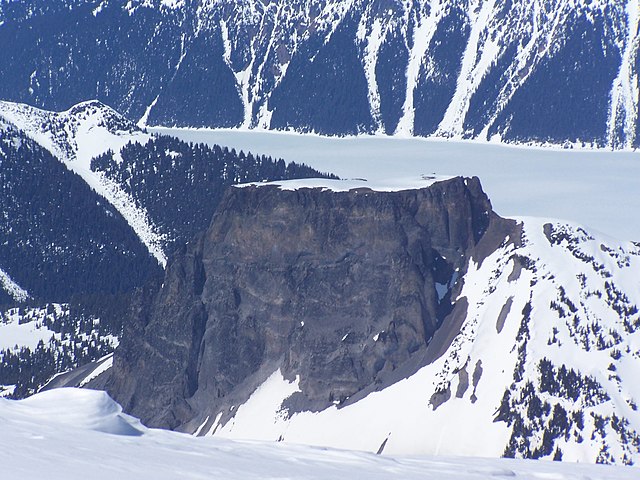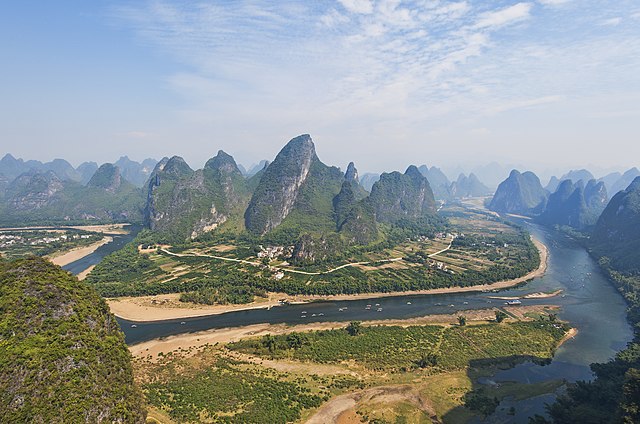A ridge is a long, narrow, elevated geomorphologic landform, structural feature, or a combination of both separated from the surrounding terrain by steep sides. The sides of a ridge slope away from a narrow top, the crest or ridgecrest, with the terrain dropping down on either side. The crest, if narrow, is also called a ridgeline. Limitations on the dimensions of a ridge are lacking. Its height above the surrounding terrain can vary from less than a meter to hundreds of meters. A ridge can be either depositional, erosional, tectonic, or a combination of these in origin and can consist of either bedrock, loose sediment, lava, or ice depending on its origin. A ridge can occur as either an isolated, independent feature or part of a larger geomorphological and/or structural feature. Frequently, a ridge can be further subdivided into smaller geomorphic or structural elements.
A mountain ridge in Japan
A strike ridge within the Appalachian Mountains.
The edges of tuyas can form ridges.
Pirin Mountain main ridge – view from Koncheto knife-edge ridge towards the pyramidal peaks Vihren and Kutelo
A landform is a natural or anthropogenic land feature on the solid surface of the Earth or other planetary body. Landforms together make up a given terrain, and their arrangement in the landscape is known as topography. Landforms include hills, mountains, canyons, and valleys, as well as shoreline features such as bays, peninsulas, and seas, including submerged features such as mid-ocean ridges, volcanoes, and the great ocean basins.
This conical hill in Salar de Arizaro, Salta, Argentina called Cono de Arita constitutes a landform.
Panorama of Great Smoky Mountains National Park showing physical features of a rolling plain, actually part of a broad valley, distant foothills, and a backdrop of the old, much weathered Appalachian mountain range
Karst tower landforms along Lijiang River, Guilin, China







